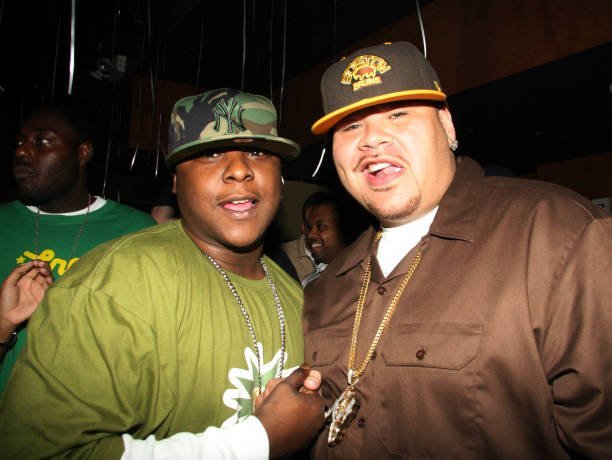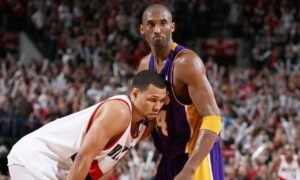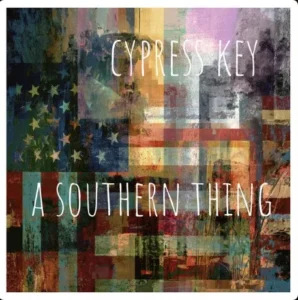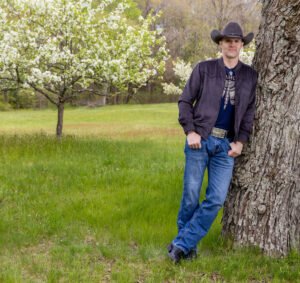Joe & Jadakiss on the Dangers of Hip-Hop: Fame, Fear, and the Fight to Survive
In a candid, powerful conversation, Joe and Jadakiss pull back the curtain on the true cost of being a rapper. From emotional recollections of fallen legends like Tupac, Biggie, and Big L to firsthand experiences with violence, jail, and betrayal, the two veterans lay bare the dark side of hip-hop. They dive into the impact of social media, the illusion of wealth, and why staying alive and free is often harder than making a hit. This raw, unfiltered dialogue offers a rare glimpse into the pain, pride, and perseverance of the culture.

Jadakiss and Fat Joe during Dawn Baxter and Big Nigel Birthday Party at BLVD - June 8, 2006 at BLVD in New York City, New York, United States. (Photo by Johnny Nunez/WireImage)
Music, interviews, and candid conversations are commonly used in hip-hop to share stories of triumph, tragedy, and the industry’s harsh realities. Joe and Jadakiss, two veterans who have personally witnessed the cultural evolution, have the weight and authenticity that few voices possess. This revealing discussion extensively explores the dangerous realities of being a rapper.
Is Hip-Hop the Most Dangerous Job in the World?
Jim Jones once said, “Hip hop is the most dangerous job in the world.” Joe and Jadakiss are conversing about a nuanced and agreeable statement. Joe stresses that being a hip-hop artist is a dangerous profession, ranking in the top five, no matter if you’re alive or dead. He vividly depicts other challenging jobs, such as laying tar in Phoenix’s 130-degree heat or fishing for lobsters.
The ‘hate cancer’, as Joe refers to it, is present in the places where rappers come from, making areas like The Bronx or Yonkers more dangerous than distant cities like Compton or Chicago. Violence and heartbreak within the culture are fueled by the toxic mix of love and hate that is bred by closeness.
The Pain of Losing Legends: Biggie, Big Pun, and Big L
Jadakiss’ recounting of the night The Notorious B.I.G. was killed takes the conversation to a deeper level.. The hip-hop world was shocked by Biggie’s murder during his first trip to Los Angeles. Jadakiss acknowledges his naiveté, believing he was being well-protected by his entourage and record label, but soon realized that the dangers were real and imminent. Joe recounts his terrifying experience with Big Pun during the same trip, describing how they had to carry firearms to protect themselves at the Grammy Awards. Joe is also affected by the loss of Big L. He remembers rushing to the scene when Big L was killed on his block, a senseless act that shook the community. Big L’s lyrical prowess and fun-loving nature were well-known, but his murder was a stark reminder of how violence in hip-hop often strikes those who are most vulnerable.
How Social Media Changed the Game—For Better and Worse
The rise of social media has impacted hip-hop, but not always for the better, as Joe and Jadakiss point out. In the past, there was a slow spread of news about violence or disputes, often limited to word-of-mouth or local gossip. The broadcasting of every incident instantly to millions amplifies hatred and jealousy. Joe points out that the spread of hate cancer is now quicker, as anyone can create a narrative or start a page dedicated to tearing down an artist. Fame comes with visibility, but it also comes with unprecedented scrutiny and danger. How technology has exposed artists to risks that previous generations never faced is illustrated by the tragic murder of Nipsey Hussle, caught on video.
Danger in the Streets and Behind Bars: The Reality of Jail
Hip-hop artists frequently have to navigate both the streets and the brutal realities of prison. Joe shares chilling stories about Tory Lanez, who was brutally attacked in jail and stabbed multiple times by hardened criminals.
The ‘club med’ environment is not what this is; it’s a violent battleground where survival is a daily struggle. Joe discusses his own jail experiences and describes the intimidation and mental preparation needed to walk to his cell. Despite his fame, the harsh realities still hit him, demonstrating the stark difference between public perception and experience.
Remembering Pop Smoke and the Impact of Real-Time Danger
The murder of Pop Smoke is a tragic illustration of how social media and technology can expose artists to danger. As Joe explains, Pop Smoke’s online posting of Joe’s location made it easier for assailants to locate him. Artists have had to adapt by being more cautious about what they share publicly because this real-time exposure was uncommon in earlier eras.
Meeting Tupac Shakur: A Personal Encounter
One of the most captivating parts of the conversation is Joe recounting his meeting with Tupac Shakur. Tupac’s presence was always full of drama and danger, making him magnetic and intense. Joe recalls seeing Tupac at an Atlanta event, commanding the room with his raw energy. Joe recalls Tupac as one of the most genuine and prolific rappers who ever lived, despite the frequent chaos surrounding him.
The Financial Realities: Rappers Are Still Living Check-to-Check
Many successful rappers are still living paycheck-to-paycheck, contrary to popular belief. Joe explains that their earnings are quickly depleted by legal fees, insurance, and lifestyle costs, regardless of their income level. The notion of wealth is often just an illusion. Despite having millions in the bank, the daily grind persists. The reality is exacerbated by the transition from physical album sales to streaming, which Joe and Jadakiss argue for paying artists less per play. Although streaming has made music more accessible, it has also resulted in artists relying on large numbers to generate substantial income, often without the financial stability that album sales once provided.
Advice for the Younger Generation: Health, Hustle, and Survival
Joe and Jadakiss advise up-and-coming rappers to care for themselves physically and mentally, avoid jail, and focus on entrepreneurship beyond music. They stress the importance of health, stating that many famous individuals have suffered due to their inability to adjust their lifestyles as they age. Jadakiss, for instance, adheres to his fitness regimen, going as far as doing push-ups in the snow. Joe admits he’s not as rigorous, but recognizes the need for preservation in an industry that can be unforgiving. Diversifying income streams through selling products such as hair dye, juices, and other legal ventures is also emphasized to build lasting wealth and stability. Music is a stepping stone, a gateway to bigger opportunities.
Honoring the Legacy of Hip-Hop’s Greatest Producers
The conversation ends after a passionate discussion about the top five hip-hop producers of all time. Joe and Jadakiss acknowledge that many legendary producers began as DJs and combined their skills to create iconic sounds. Their choices are DJ Premier, Dr. Dre, J Dilla, Kanye West, and Havoc. Other notable names include Scott Storch and Swizz Beatz.
They discuss the advantages of producers who work alone versus those who collaborate with teams, acknowledging that the creative process differs, but the impact remains significant. These producers launched the careers of countless artists and shaped the sound of hip-hop.
Conclusion: The Unfiltered Truth of Hip-Hop’s Past, Present, and Future
Joe and Jadakiss’s conversation offers a rare, unvarnished look at the realities of hip-hop, from the dangers on the streets and in prison to the financial struggles and the evolving landscape shaped by technology and social media. Their tales of Tupac, Biggie, Big Pun, and others are potent reminders of the cost of fame and the fragility of life in the spotlight. Yet, despite the dangers and challenges, their words carry hope and wisdom for the next generation. Young artists can handle the industry’s complexities with greater resilience by prioritizing health, staying smart on social media, diversifying income, and respecting the legacy of previous generations. In the end, hip-hop remains a powerful cultural force, a platform for expression and entrepreneurship, and a community that keeps evolving. Joe and Jadakiss’ lessons remind us of the value of authenticity, perseverance, and care in an increasingly competitive world.








